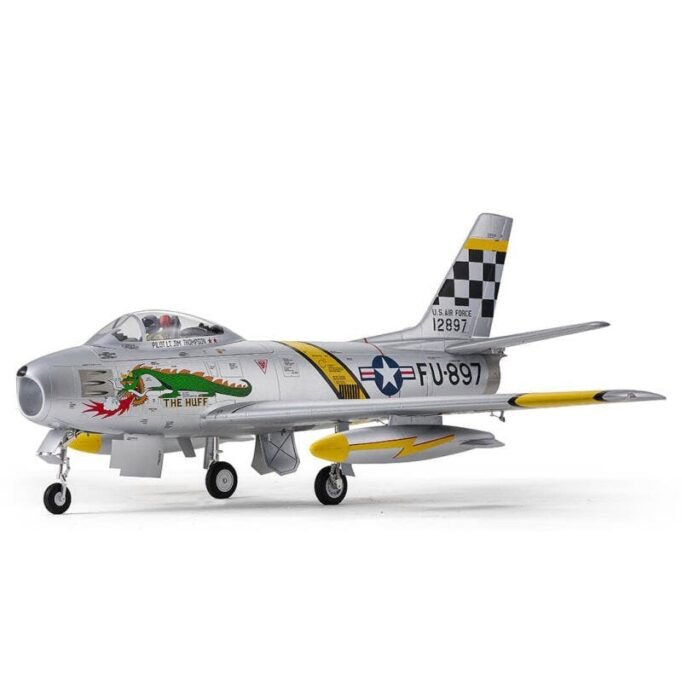The thrill of piloting an RC airplane through loops, rolls, and inverted flights transforms a simple hobby into an exhilarating aerial adventure. Whether you’re mastering your first barrel roll or perfecting complex aerobatic sequences, the right aircraft makes all the difference in your progression as a pilot. Stunt flying demands precision, control, and equipment that can keep pace with your growing ambitions.
Many RC enthusiasts find themselves frustrated when their aircraft can’t deliver the flight time needed to practice advanced maneuvers, or when limited features hold back their skill development. Short battery life cuts training sessions short just as you’re finding your rhythm, while basic models lack the responsiveness required for challenging stunts. Finding an airplane that balances extended performance with advanced capabilities often feels like searching for a needle in a haystack.
The T-28 Trojan and similar high-performance RC models address these challenges head-on. With extended battery life that supports longer practice sessions and advanced features designed specifically for stunt flying, these aircraft provide the platform serious enthusiasts need to elevate their skills. Let’s explore what makes these models stand out and how they can transform your flying experience.
Introduction to T-28 Trojan
The T-28 Trojan has earned its reputation as a go-to aircraft for pilots ready to push beyond basic flying. This warbird-inspired model combines historical aesthetics with modern RC technology, creating an aircraft that’s as capable as it is visually striking. Its design philosophy centers on providing pilots with the tools they need for serious aerobatic training without overwhelming beginners who’ve mastered fundamental flight skills.

What sets the T-28 apart is its thoughtful engineering approach. The lightweight construction reduces strain on the motor and battery system, allowing for more efficient power consumption during demanding maneuvers. This efficiency translates directly into longer flight times, giving you the opportunity to practice complex sequences repeatedly in a single session. The airframe’s durability means it can withstand the occasional hard landing that comes with pushing your limits, while the aerodynamic profile provides stable flight characteristics that inspire confidence during inverted passes and vertical climbs.
The aircraft’s responsive control surfaces deliver immediate feedback to your stick inputs, creating the precise handling needed for tight loops and snap rolls. Combined with adequate power reserves for vertical maneuvers and the stability to recover from challenging positions, the T-28 provides a comprehensive platform for skill development that grows with your abilities.
Battery Life
Extended flight sessions separate casual flying from serious skill development, and battery performance plays the crucial role in determining how much practice you can accomplish. The T-28’s power system delivers flight times that consistently exceed twenty minutes under normal aerobatic conditions, giving you multiple attempts at perfecting challenging maneuvers before needing to land. This extended endurance means you can work through an entire sequence of stunts, make adjustments based on what you observe, and immediately try again while the lessons are fresh in your mind.

The practical impact becomes clear during training sessions focused on specific skills. When practicing knife-edge flight or perfecting your timing for Cuban eights, you need enough air time to develop muscle memory and refine your technique. Short battery life forces constant interruptions that break your concentration and slow progress. With extended capacity, you maintain focus throughout your practice routine, building the consistency that transforms individual stunts into smooth aerobatic sequences. The ability to complete multiple full routines per battery also means you can experiment with different approaches and find what works best for your flying style.
Stunt Flying Features
Maneuverability defines an aircraft’s stunt potential, and the T-28 delivers control authority across all axes that makes advanced aerobatics accessible. The elevator provides strong pitch control for tight loops and quick transitions between climbing and diving maneuvers, while generous rudder throw enables crisp knife-edge flight and coordinated rolls. Aileron response strikes the balance between quick snap rolls and smooth barrel rolls, giving you the precision to choose your roll rate based on the maneuver you’re executing.
The aircraft’s power-to-weight ratio supports vertical maneuvers that many similar-sized models struggle to maintain. You can pull straight up from level flight, hold the vertical line while performing a roll, and still have enough energy to complete the maneuver cleanly. This capability opens up the full range of aerobatic possibilities, from simple loops to complex vertical sequences. The stability during inverted flight comes from careful center-of-gravity positioning and wing design that maintains predictable handling whether you’re right-side up or upside down.
Control sensitivity adjustments allow you to tailor the aircraft’s response to match your skill level and the type of flying you’re practicing. Dialing in higher rates gives you the aggressive response needed for 3D-style maneuvers and quick directional changes, while lower rates provide the smoothness required for scale aerobatics and precision flying. This adaptability means the aircraft evolves with your abilities rather than becoming limiting as you advance.
Comparing RC Airplanes
While the T-28 Trojan excels in aerobatic performance, several other models deserve consideration for pilots seeking extended flight times and stunt capabilities. The F4U Corsair brings similar warbird styling with a slightly different flight character, offering robust construction and comparable battery endurance that appeals to pilots who prefer gull-wing aesthetics. Its slightly heavier wing loading provides smoother flight in windy conditions, though it requires marginally more space for maneuvers compared to the T-28’s tighter turning radius.
The P-51 Mustang represents another strong contender in the warbird category, delivering exceptional speed range and vertical performance that matches or exceeds the T-28 in certain aspects. Pilots report flight times in the same twenty-plus minute range, with power systems optimized for both sustained aerobatics and high-speed passes. The Mustang’s sleeker profile cuts through the air with less drag, translating to slightly higher top speeds, though some pilots find the T-28’s broader wing provides more forgiving stall characteristics during slow-speed precision work.
For those exploring beyond warbirds, modern sport aerobatic designs offer different advantages worth examining. These purpose-built stunt planes often feature symmetrical airfoils that provide identical performance whether inverted or upright, along with oversized control surfaces that enable extreme 3D maneuvers. Battery life typically matches warbird models when using similar capacity packs, but the flight experience emphasizes aggressive aerobatics over scale realism. User feedback consistently highlights how each aircraft type develops different skill sets—warbirds teach smooth, flowing aerobatics and energy management, while sport models build reflexes for rapid control inputs and hover-style maneuvers.
User Reviews
Experienced pilots consistently praise the T-28’s reliability during demanding aerobatic sessions, with many reporting hundreds of flights without significant mechanical issues. The durability factor emerges repeatedly in user feedback, particularly regarding the airframe’s ability to handle the stresses of repeated loops, rolls, and occasional rough landings that accompany skill development. Pilots transitioning from trainer aircraft appreciate how the T-28’s stability provides a confidence-building bridge to more advanced aerobatics without the intimidation factor of ultra-sensitive sport models.
Battery performance receives particular attention in real-world assessments, with users noting that advertised flight times hold true even when flying aggressively. Several reviewers mention achieving twenty-two to twenty-five minutes of continuous aerobatic flying, which exceeds their expectations based on previous aircraft experience. This consistency matters greatly for planning practice sessions and building training routines that require predictable air time. The power system’s efficiency also means batteries remain healthier over many charge cycles, reducing long-term operating costs.
Control responsiveness generates enthusiastic feedback from pilots working on specific maneuvers. Users describe the elevator authority as particularly well-suited for perfecting loops and Cuban eights, while the rudder effectiveness makes knife-edge flight more achievable than expected for an aircraft in this class. Some advanced pilots note that while the T-28 handles 3D-style hovering, it truly shines in traditional aerobatics where smooth, flowing maneuvers showcase its design strengths. Manufacturers like FMS Model have built strong reputations in the RC community by producing warbirds with these balanced flight characteristics that appeal to both scale enthusiasts and aerobatic pilots. The consensus points to an rc airplane that delivers on its promise of helping pilots advance their skills through reliable performance and forgiving flight characteristics.

Elevate Your Aerobatic Performance
Advancing your stunt flying skills requires more than just practice—it demands an aircraft that supports your ambitions with reliable performance and capabilities that match your growing expertise. The T-28 Trojan stands out as an exceptional platform for pilots ready to move beyond basic maneuvers, offering the extended battery life that keeps you airborne longer and the responsive controls that make complex aerobatics achievable. Its combination of durability, power, and precision creates the ideal environment for developing the muscle memory and confidence needed to execute impressive aerial sequences.
Whether you choose the T-28 or explore alternatives like the F4U Corsair or P-51 Mustang, selecting an aircraft with proven aerobatic capabilities and substantial flight times transforms your training sessions from frustrating limitations into productive skill-building experiences. The investment in a quality stunt-capable model pays dividends through faster progression, reduced downtime, and the pure enjoyment of mastering maneuvers you once thought beyond reach. Take your flying to the next level by choosing an aircraft designed to grow with your abilities—your most impressive flights are waiting just beyond your current skill ceiling.




